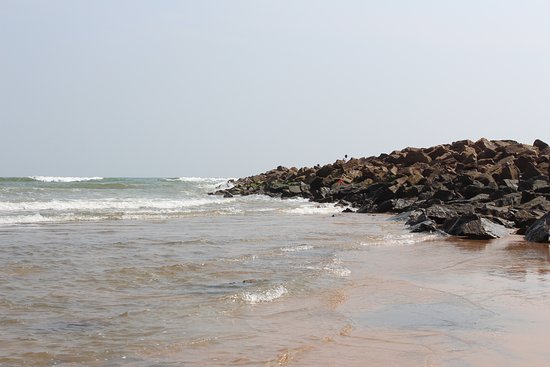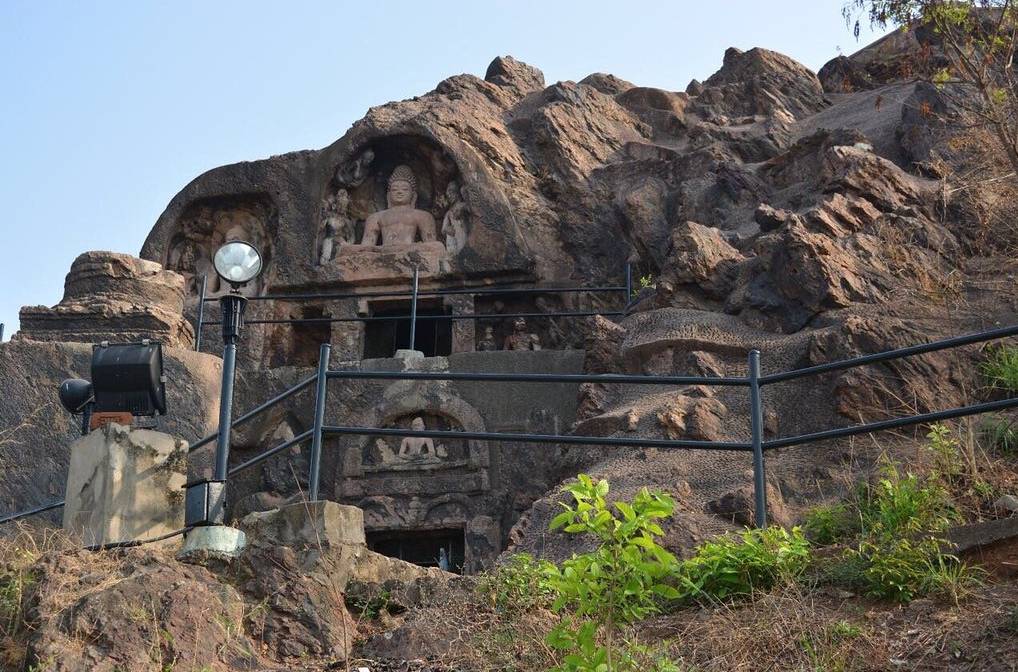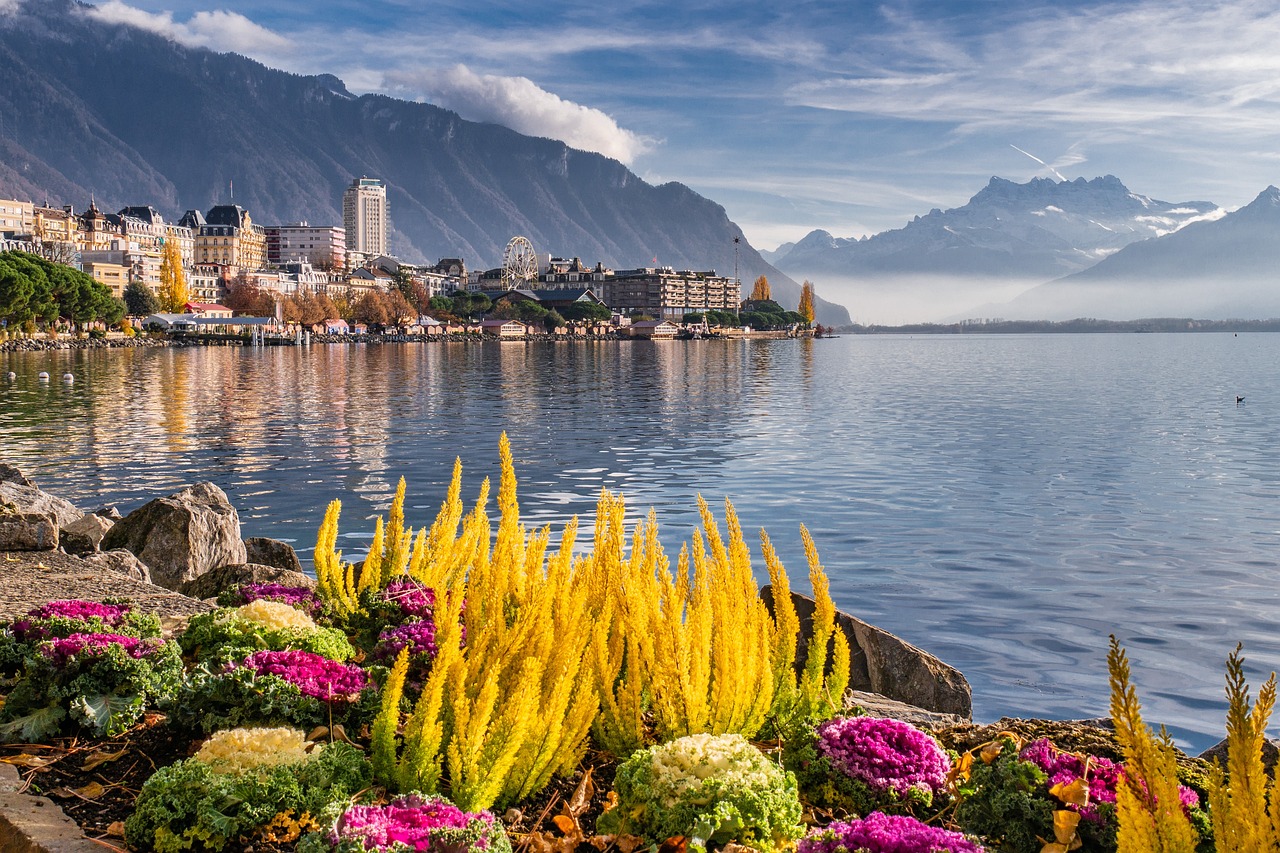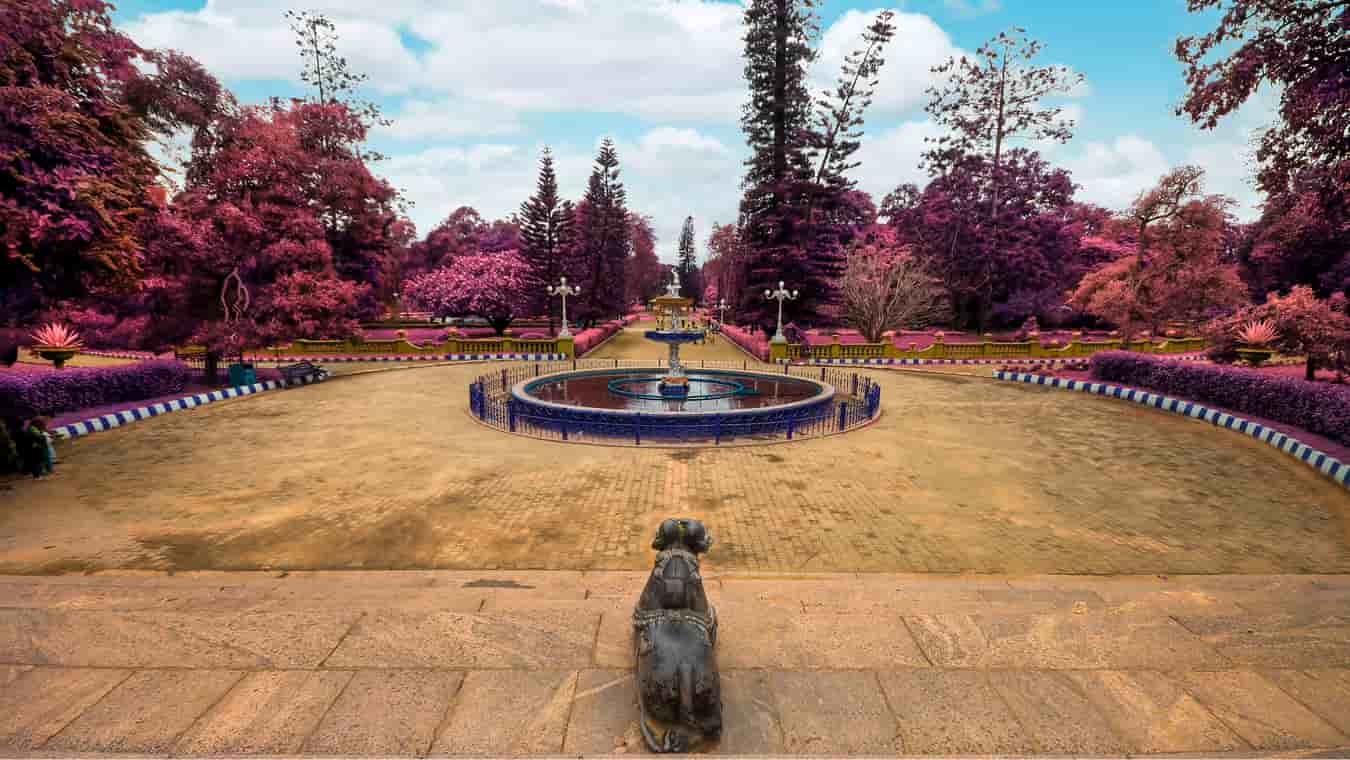Kambalakonda Wildlife Sanctuary, located in the Visakhapatnam district of Andhra Pradesh, India, is a beautiful and diverse ecosystem that is home to a wide variety of flora and fauna. The sanctuary is spread over an area of 710 acres and is known for its rich biodiversity.
The sanctuary is home to a variety of animals including tigers, leopards, sloth bears, hyenas, jackals, and a wide variety of deer and antelopes. It is also a birdwatcher’s paradise, with a wide variety of resident and migratory birds such as parakeets, peacocks, and hornbills. The sanctuary also has a diverse range of reptiles, including crocodiles and snakes, as well as a wide variety of fish and amphibians.
The area is covered by a dense forest and is a great place for nature lovers and adventure enthusiasts. The forest is a mix of deciduous and evergreen forests and is a great place for trekking and hiking. The sanctuary also has a small lake, which is home to a wide variety of aquatic life, making it a popular spot for fishing and boating.
The Kambalakonda Wildlife Sanctuary is not just a nature reserve, but it also has an ecological park that is dedicated to educating visitors about the importance of conservation and the role of forests in the ecosystem. The park has a number of interactive exhibits and displays that help visitors learn about the different species of animals and plants that call the sanctuary home, as well as the importance of protecting these habitats.
The sanctuary also has a number of facilities for visitors, including rest houses, watchtowers, and nature trails. It is also a popular spot for camping and picnicking, and visitors can enjoy a wide variety of outdoor activities such as bird watching, nature photography, and trekking.
In conclusion, Kambalakonda Wildlife Sanctuary is a great place to visit for nature lovers, adventure enthusiasts, and families. It offers a wide variety of activities and experiences and is a great way to learn about the importance of conservation and the diversity of India’s wildlife. The park is a great place to get away from the hustle and bustle of city life and spend some time in the great outdoors.
History and Geography of Kambalakonda Wildlife Sanctuary
Kambalakonda Wildlife Sanctuary is located in the Visakhapatnam district of Andhra Pradesh, India. The sanctuary is situated on the Eastern Ghats and covers an area of 710 acres.
The history of the Kambalakonda Wildlife Sanctuary can be traced back to the late 1970s. The area was originally a private forest reserve, but it was later declared a wildlife sanctuary in 1978 by the Andhra Pradesh Forest Department. The sanctuary was established to protect the diverse array of flora and fauna that calls this area home.
The geography of Kambalakonda Wildlife Sanctuary is characterized by rugged terrain and steep hills, with an elevation that ranges from 200 to 900 meters above sea level. The area is covered by a dense forest that is a mix of deciduous and evergreen forests. The forest is home to a wide variety of plant species including teak, sandalwood, bamboo, and a variety of medicinal plants.
The sanctuary is situated on the Eastern Ghats, which is a mountain range that runs along the eastern coast of India. The Eastern Ghats are known for their rich biodiversity and are home to a wide variety of animals and plants. The area receives a moderate amount of rainfall and has a pleasant climate that makes it a great place to visit year-round.
The Kambalakonda Wildlife Sanctuary also has a small lake, which is home to a wide variety of aquatic life and is a popular spot for fishing and boating. The sanctuary also has a number of nature trails and watchtowers, making it a great place for trekking and hiking.
Overall, Kambalakonda Wildlife Sanctuary is a unique and diverse ecosystem that is home to a wide variety of flora and fauna. Its history, geography, and biodiversity it contains make it a great place to visit for nature lovers, adventure enthusiasts, and families.
Flora and Fauna at Kambalakonda Wildlife Sanctuary
Kambalakonda Wildlife Sanctuary is home to a diverse array of flora and fauna. The sanctuary is known for its rich biodiversity, and it is a great place to learn about the different species of plants and animals that call this area home.
The flora at the sanctuary includes a variety of plant species such as teak, sandalwood, bamboo, and a variety of medicinal plants. The forest is a mix of deciduous and evergreen forests, and it provides a habitat for a wide variety of plant species. The forest is also home to a wide variety of orchids, ferns, and bryophytes, which are small, non-vascular plants.
The fauna at the sanctuary is equally diverse, with a wide variety of animals calling this area home. The sanctuary is home to a variety of mammals such as tigers, leopards, sloth bears, hyenas, jackals, and a wide variety of deer and antelopes. It is also a birdwatcher’s paradise, with a wide variety of resident and migratory birds such as parakeets, peacocks, and hornbills. The sanctuary also has a diverse range of reptiles, including crocodiles and snakes, as well as a wide variety of fish and amphibians.
The sanctuary is also home to a wide variety of butterflies, moths, and other insects, which are an important part of the ecosystem. The insects play a vital role in pollination and are a food source for many other animals.
In addition to the wide variety of flora and fauna, Kambalakonda Wildlife Sanctuary also serves as an important habitat for many threatened and endangered species. The sanctuary is home to several species that are listed as critically endangered, such as the Indian pangolin, the Indian giant squirrel, and the slender loris.
Overall, Kambalakonda Wildlife Sanctuary is a unique and diverse ecosystem that is home to a wide variety of flora and fauna. It is a great place to learn about the different species of plants and animals that call this area home, as well as the importance of conservation and protection of habitats.
Things to Do at Kambalakonda Wildlife Sanctuary
Kambalakonda Wildlife Sanctuary offers a wide variety of activities and experiences for visitors. Some of the things that visitors can do at the sanctuary include:
- Safari rides: The sanctuary offers safari rides, which allow visitors to explore the park and see the wildlife up close. The safari rides are guided by trained naturalists who can provide information on the different species of animals and plants found in the park.
- Bird watching: The sanctuary is home to a wide variety of resident and migratory birds, making it a popular spot for bird watching. Visitors can see a wide variety of birds such as parakeets, peacocks, and hornbills.
- Nature photography: A sanctuary is a great place for nature photography, with a wide variety of animals, birds, and plants to photograph.
- Trekking and hiking: The rugged terrain and steep hills of the sanctuary make it a great place for trekking and hiking. Visitors can explore the forest on foot and see the diverse array of flora and fauna up close.
- Fishing and boating: The sanctuary has a small lake, which is home to a wide variety of aquatic life and is a popular spot for fishing and boating.
- Camping and picnicking: Visitors can also camp and picnic in the park. The park has designated areas for camping and picnicking, and visitors can enjoy a wide variety of outdoor activities such as bird watching, nature photography, and trekking.
- Ecological park: The park has an ecological park that is dedicated to educating visitors about the importance of conservation and the role of forests in the ecosystem. The park has a number of interactive exhibits and displays that help visitors learn about the different species of animals and plants that call the sanctuary home, as well as the importance of protecting these habitats.
Overall, Kambalakonda Wildlife Sanctuary is a great place to visit for nature lovers, adventure enthusiasts, and families. It offers a wide variety of activities and experiences and is a great way to learn about the importance of conservation and the diversity of India’s wildlife.
Entry Fee and Timings of Kambalakonda Wildlife Sanctuary
The entry fee and timings for Kambalakonda Wildlife Sanctuary may vary depending on the time of year and the specific regulations set by the park authorities. However, generally, the following information can be used as a reference:
- Entry fee: The entry fee for Kambalakonda Wildlife Sanctuary varies depending on the type of visitor and the activities they plan to participate in. For Indian citizens, the entry fee for adults is typically around INR 15-20, while the fee for children is around INR 10-15. For foreign visitors, the entry fee is typically higher, around INR 200-300 per person. Additionally, there may be additional charges for activities such as safari rides, boating, camping, and photography.
- Timings: The park is usually open from 6:00 AM to 5:00 PM every day, but it is always best to check with the official website or local authorities for the most up-to-date information on timings as it might be subject to change depending on the season or any other circumstances.
- Note: Visitors are requested to carry valid identification documents while visiting the sanctuary.
It’s always best to check with the official website or local authorities for the most up-to-date information on entry fees, timings, and any changes.
Best time to visit Kambalakonda Wildlife Sanctuary
The best time to visit Kambalakonda Wildlife Sanctuary depends on the specific activities and experiences that visitors are looking for. However, generally, the following information can be used as a reference:
- Winter (November – February): The winter months are considered the best time to visit the sanctuary as the weather is pleasant and comfortable. During this time, the temperature ranges from 20-25°C, making it perfect for outdoor activities such as trekking, hiking, and bird watching. The park is also less crowded during this time of the year.
- Monsoon (June – September): The sanctuary receives moderate rainfall during the monsoon months, which can make the trekking and hiking trails muddy and slippery. But on the other hand, it is the best time to see the lush green forest and the park’s flora at its best. Also, visitors can also spot a variety of migratory birds during this time.
- Summer (March-May): The summer months can be quite hot and humid, with temperatures reaching up to 35°C, making it a less favorable time to visit the park.
Overall, the winter months are considered the best time to visit the Kambalakonda Wildlife Sanctuary as the weather is pleasant and comfortable, and the park is less crowded during this time of the year. However, each season has its own charm and it’s always worth checking the park’s official website or local authorities for the most updated information, as well as any specific event or activity that might be happening during your visit.
How to Reach Kambalakonda Wildlife Sanctuary
Kambalakonda Wildlife Sanctuary is located in the Visakhapatnam district of Andhra Pradesh, India. There are several ways to reach the sanctuary, depending on the mode of transportation and the location of the visitor.
By Air: The nearest airport is Visakhapatnam Airport, which is located about 30 kilometers from the sanctuary. The airport is well-connected to major cities in India and there are regular flights to and from Visakhapatnam. From the airport, visitors can hire a taxi or take a bus to reach the sanctuary.
By Train: The nearest railway station is Visakhapatnam Railway Station, which is located about 35 kilometers from the sanctuary. The station is well-connected to major cities in India and there are regular trains to and from Visakhapatnam. From the railway station, visitors can hire a taxi or take a bus to reach the sanctuary.
By Bus: The sanctuary is well connected by road and there are several state-run and private buses that run regularly from Visakhapatnam to the sanctuary. The sanctuary is also well connected to major cities in Andhra Pradesh and there are several buses that run to and from the sanctuary on a daily basis.
By Car: The sanctuary is well connected by road and can be easily reached by car. Visitors can take the National Highway 16 (NH 16) and reach the sanctuary by car.
It is always best to check with the official website or local authorities for the most up-to-date information on transportation and any changes.
Similar Articles
Frequently Asked Questions About Kambalakonda Wildlife Sanctuary
Q. What are the main attractions of Kambalakonda Wildlife Sanctuary?
A – The main attractions of Kambalakonda Wildlife Sanctuary include the diverse array of flora and fauna found in the park, including tigers, leopards, sloth bears, hyenas, jackals, and a wide variety of deer and antelopes. It is also a birdwatcher’s paradise, with a wide variety of resident and migratory birds such as parakeets, peacocks, and hornbills. The park also has a small lake, which is home to a wide variety of aquatic life, making it a popular spot for fishing and boating.
Q. Are there any safari rides offered at the sanctuary?
A – Yes, the sanctuary offers safari rides, which allow visitors to explore the park and see the wildlife up close. The safari rides are guided by trained naturalists who can provide information on the different species of animals and plants found in the park.
Q. Is there any accommodation available in the sanctuary?
A – The sanctuary has rest houses, which are available on a first-come, first-served basis. There are also other accommodation options available nearby the sanctuary, such as hotels and resorts.
Q. Are there any facilities for camping and picnicking in the park?
A – Yes, the park has designated areas for camping and picnicking, and visitors can enjoy a wide variety of outdoor activities such as bird watching, nature photography, and trekking.
Q. Is it safe to visit the park during the monsoon season?
A – The park receives moderate rainfall during the monsoon months, which can make the trekking and hiking trails muddy and slippery. Visitors are advised to take appropriate precautions and follow the instructions of the park authorities while visiting during the monsoon season.
Q. Are there any special rules or regulations to follow while visiting the sanctuary?
A – Visitors are requested to carry valid identification documents while visiting the sanctuary. Additionally, visitors should follow the park’s rules and regulations, such as not disturbing the wildlife, not littering, and not engaging in any activities that might harm the environment.









